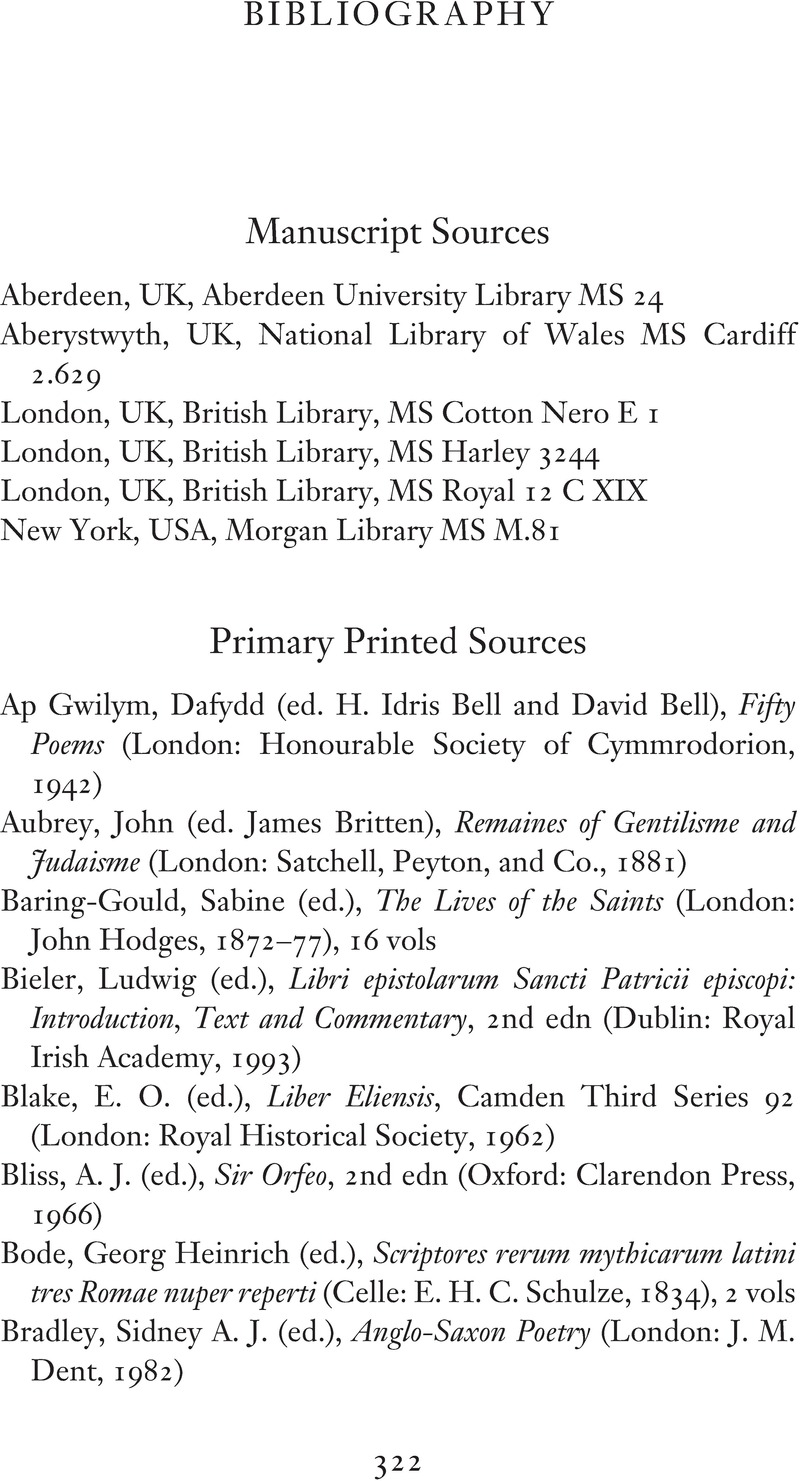Book contents
- Twilight of the Godlings
- Reviews
- Frontispiece
- Twilight of the Godlings
- Copyright page
- Dedication
- Contents
- Plates
- Preface
- Abbreviations
- Introduction
- 1 A World Full of Small Gods
- 2 Menagerie of the Divine
- 3 The Nymph and the Cross
- 4 Furies, Elves and Giants
- 5 The Fairy Synthesis
- Epilogue
- Bibliography
- Index
- References
Bibliography
Published online by Cambridge University Press: 09 March 2023
- Twilight of the Godlings
- Reviews
- Frontispiece
- Twilight of the Godlings
- Copyright page
- Dedication
- Contents
- Plates
- Preface
- Abbreviations
- Introduction
- 1 A World Full of Small Gods
- 2 Menagerie of the Divine
- 3 The Nymph and the Cross
- 4 Furies, Elves and Giants
- 5 The Fairy Synthesis
- Epilogue
- Bibliography
- Index
- References
Summary

- Type
- Chapter
- Information
- Twilight of the GodlingsThe Shadowy Beginnings of Britain's Supernatural Beings, pp. 322 - 348Publisher: Cambridge University PressPrint publication year: 2023

